Bobbi Gibb: The Boston Marathon pioneer who raced a lie
- Published

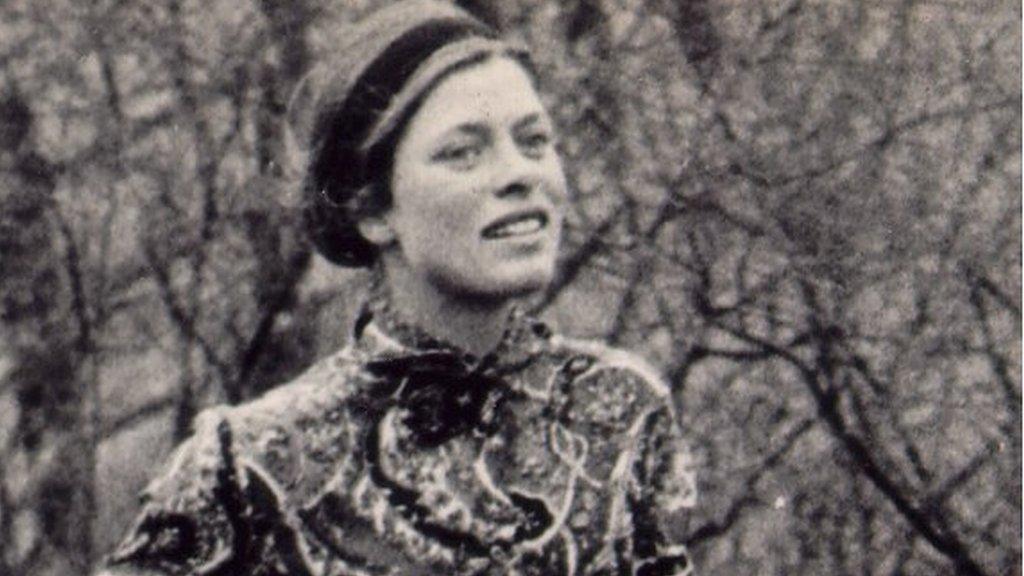
Gibb, seen running the 1967 race, is now recognised as a three-time winner of Boston Marathon
Sign up for notifications to the latest Insight features via the BBC Sport app and find the most recent in the series.
"Women are not physiologically capable of running a marathon."
Those nine words leapt off the paper like a slap to the face. "The audacity," thought Roberta 'Bobbi' Gibb.
The letter she held was the response to her request for an official entry to run the 1966 Boston Marathon - a flat-out refusal, but also a derogatory sideswipe of her capabilities as a woman, particularly given she was now running up to 40 miles at a stretch.
The 1960s were mid-swing, but attitudes towards female athletes and their participation in long-distance running remained archaic. The question of whether women could run 26.2 miles had been answered countless times before, and yet female runners remained barred from practically every marathon event around the world.
"To hell with them," she thought as she crumpled the letter and threw it on the floor. Bobbi Gibb would run the Boston Marathon - whether they'd let her or not.

Ask Google who was the first woman to run the Boston Marathon, external and you'll find the name Kathrine Switzer, along with a photo that appears to show a group of men chasing and manhandling a woman with the number 261 pinned to her midriff.
It is a shocking image that easily fits a narrative of embedded misogyny, but this is not the real story of the first woman to run the world's oldest continually staged marathon. The truth, as so often, is far from black and white.
Growing up in the suburbs of Boston, Gibb was always an energetic child with a sense of awe and a love of nature.
"My mother used to say to me that you're never going to find a husband while running around in the woods with the neighbourhood dogs," says Gibb.
For all the significant changes that occurred during the 1960s, it was still a time of rigid social constructs.
"After the war, people were just happy to return to normality - and normal meant the little women in the kitchen, washing the dishes, with the nice curtains. There were centuries of well-established beliefs about women," said Gibb.
"I looked at my mother's life and those of her friends; they were such narrow lives - you couldn't even get a credit card without your husband's permission."
Gibb knew she wanted something different, but like many growing up with idealistic dreams of great change, the pathway to it was labyrinthine.
"I wanted to change the social consciousness about women from a very early age, but I didn't know how to do it - at first."
Despite living close to the Boston Marathon route, Gibb had never attended a race until her father took her in 1964. The effect was immediate and profound.
"I just fell in love with it - I found it very moving. All these people moved with such strength, courage, endurance and integrity. Something deep inside told me that I was going to run this race - this was what I was supposed to do."
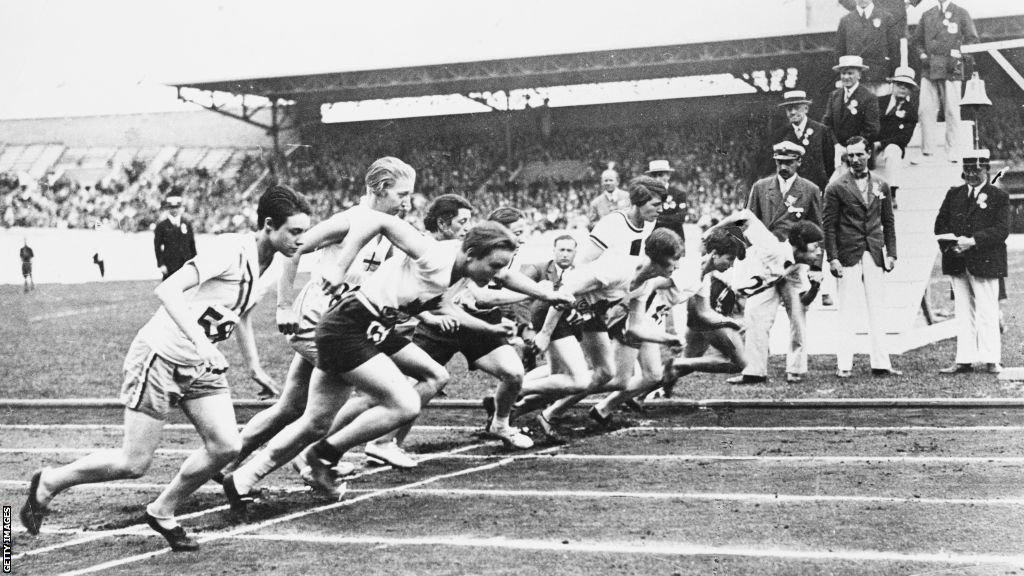
The start of the women's 800m final at the 1928 Olympics in Amsterdam - the event wasn't staged again for another 32 years
In the mid-1960s, women's long-distance running was still considered dangerously radical. Female runners had completed 26.2 miles many times, but groundless ideas lingered that a woman's body was not built for such extreme exertion. It was feared that allowing women to take on the distance would lead to dangerous levels of indecency.
"Running was considered a breeding ground for impropriety that would overly sexualise women," said Jaime Schultz, Professor in Kinesiology at Penn State University.
Names that should be etched on plaques as great marathon pioneers are now almost lost. The day after the men's marathon event at the first modern Olympic Games in Athens in 1896, Stamata Revithi, a 30-year-old mother from Piraeus, ran the same course unofficially in five and half hours. , external
Practically no reliable information exists on Revithi, except that she came from poverty, had a 17-month-old child and had lost an older child the previous year. Her achievement received little to no attention, with the Athens Messenger reporting briefly that "an active and determined woman made a trial run of the classic route in early March, without any stops except a momentarily rest to eat some oranges".
Nothing is known about this trailblazing woman, often labelled as the 'first female marathon runner' after that day. As Greek author Athanasios Tarasouleas puts it: "Stamata Revithi was lost in the dust of history."
Thirty years later, in 1926, an English woman, Violet Piercy, ran the London Marathon course unofficially in 3:40:22 and completed two official marathons in 1933 and 1936. The Sunday Mirror quoted her as saying her 1936 race was to "prove that women could stick the distance.", external
It was clear to all with their eyes open that women could run 26.2 miles, but cynical attitudes lingered based on imaginary evidence and often outright lies.
The 1928 Summer Olympic Games saw women compete in track and field events for the first time, and on 2 August three of the nine women who ran in the 800m final broke the world record, with Germany's Lina Radke claiming gold.
However, what should have been a giant stride forward for women's athletics degenerated into a remarkably nasty media campaign, external in which newspapers worldwide reported incorrectly that many women had collapsed with exhaustion after the race and that such exploits were far beyond the female sex.
The New York Times falsely reported that "six out of the nine runners were completely exhausted and fell headlong on the ground", while the Montreal Star shrieked that the race was "obviously beyond women's powers of endurance and can only be injurious to them". The Daily Mail even pondered whether women running over 200 metres would age prematurely.
The media firestorm led officials to cut the 800 metres from the women's Olympics, with the event not appearing again until 1960. Women's perceived fragility was underpinned by some preposterous medical theories that wound their way into the public consciousness.
"There were fears that women would become more 'masculine' if they played sports and that they had a finite amount of energy. If they expended it on education, politics and sport, it would draw away from their reproductive capabilities," said Schultz.
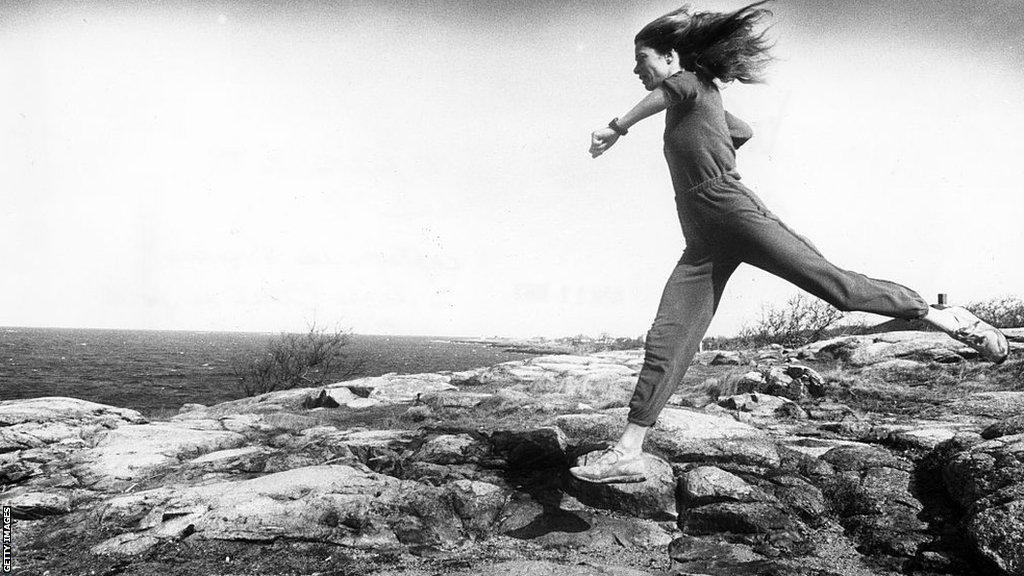
Gibb's trained on trails and paths as she prepared for her Boston Marathon debut
Gibb started quietly training for the Boston Marathon in 1964, often using the Middlesex Fells Reservation near her home to run away from judgmental eyes.
"I didn't know what to do. I didn't have a coach, no books, nothing. I didn't have any way of measuring distance, so I just went by time. My boyfriend would drop me off on his motorbike and I would run home," says Gibb.
In 1964, her parents went on sabbatical to the UK, leaving 21-year-old Gibb their VW campervan. With a summer ahead of her and a longstanding dream of seeing more of the country, she packed up the van and spent the next 40 days moving slowly from the east to the west coast.
"At night, I would sleep out under the skies, and each day I would run in a different place. Over the Berkshires, along the Mississippi River and across the Great Plains, over the Rocky Mountains and the Continental Divide, and down into California - before jumping into the Pacific Ocean - all in one summer. That was my training for the 1966 Boston Marathon," says Gibb.
A few months before the marathon, she applied for a runner's number to be one of the 540 that would eventually start the race, but was rejected with the now famously curt assessment of women's physiological capabilities.
"I realised that this was my chance to change the social consciousness about women. If I could prove this false belief about women wrong, I could throw into question all the other false beliefs that had been used to deny women opportunities," says Gibb.
Four days before the race, she boarded the first of several Greyhound buses and arrived at the family home 72 hours later.
Her mother drove her to the start line the morning of the race that would catapult her into the limelight.
"My dad thought I was nuts and refused to come. I was wearing my brother's Bermuda shorts, a swimsuit underneath, and a big sweatshirt with a hood that I pulled around my head," says Gibb.
After running a few warm-up miles she returned to the starting area, where she did her best to hide by creeping into a set of bushes nearby.
When the starting pistol cracked, Gibb loitered, allowing the faster runners to move down the road before joining the moving crowd.
"Very quickly, the men behind me could tell that I was a woman - probably by studying my anatomy from the rear," says Gibb. "I was so nervous. I didn't know what would happen. I thought I might even be arrested."
Her fears were unfounded. Instead of hostility, camaraderie quickly flourished. When it became clear she needed to take off her sweatshirt or suffer the heat in it, she expressed her fears of being ejected from the race to the men around her. "We won't let them," came their unified assurance.
"There was this myth that men were always against women, but it wasn't true. Those guys were great, upbeat, friendly and protective; they were like my brothers," says Gibb.
Buoyed by the companionship, Gibb removed her outer layer and ran freely and proudly - her blonde ponytail swinging from side to side. Spectators lining the street - men, women and children - applauded her as she passed, with news of her participation spreading along the course via radio bulletins.
As she approached Wellesley College, a women's university on the route, pandemonium erupted. The momentous event was described 30 years later by Wellesley College President Diana Chapman Walsh, who was present as a student spectator that day. , external
"Word spread to all of us lining the route that a woman was running the course," she said.
"We scanned face after face in breathless anticipation until, just ahead of her, through the excited crowd, a ripple of recognition shot through the lines, and we cheered as we never had before.
"We let out a roar that day, sensing that this woman had done more than just break the gender barrier in a famous race."
"The women were crying and jumping up and down. One kept shouting 'Ave Maria, Ave Maria'. It was an emotional moment for me," says Gibb.
Gibb was not only blazing a trail, she was doing it quickly. She ran the first 20 miles at a sub-three hour pace, but with her newly-bought men's running shoes cutting into her feet, her speed began to drop.
Her race had changed. Anxiety over being pulled out by officials was now replaced by that feeling all too familiar to any long-distance runner - painful determination and a longing for the finish line.
As she made her way through Boston, spurred on by the tremendous noise that accompanied her, Gibb still had no idea how close she was to the end.
"I didn't know where I was or how far I had left - I just gritted my teeth and ran," says Gibb.
Turning right on to Hereford Street, the noise seemed to ratchet up, and a final left on to Boylston Street revealed the finish line that she had been dreaming of for so long.
Gibb completed her first Boston Marathon in an impressive three hours, 21 minutes and 40 seconds - faster than two-thirds of the competitors.
A now iconic image shows her running alone, her face grimacing as she nears the finish line. On both sides, spectators crane their necks, ignoring other runners passing by, desperate to glimpse the first female finishing the storied race.
Crossing the line, she was greeted warmly by Massachusetts State Governor John Volpe, who shook her hand and offered his congratulations before being ushered into a hotel room where the world's press waited breathlessly.
After the interviews, the group of men she had been running with invited her to join them for the traditional post-race stew, but as they reached the door, Gibb was barred from entry: "Sorry, men only."
It had been a day of dramatic change, but any notion of true equality was still a distant dream.
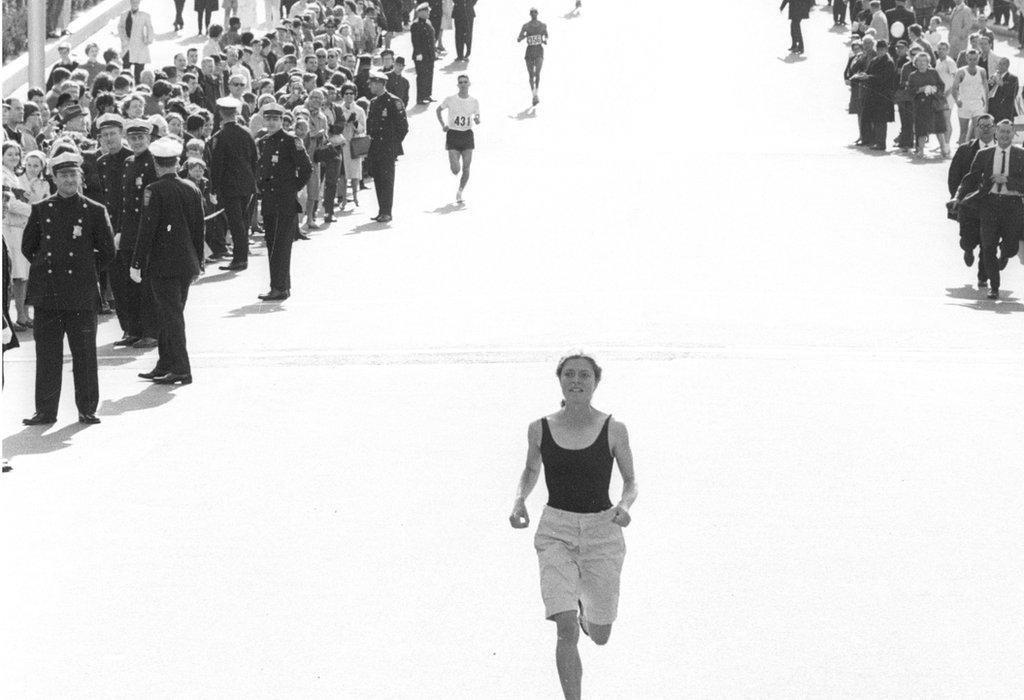
The famous photo of Gibb closing in on the finish as massed ranks of spectators watch on at the 1966 Boston Marathon
Gibb ran the Boston Marathon twice more. In 1967, she was joined by Switzer, the runner often portrayed as the first woman to run the race, who she beat by more than an hour. The following year, five women ran the Boston Marathon, with Gibb winning once again.
For many years, Switzer's participation in the 1967 race overshadowed Gibb's achievement, a fact that never sat well with the true first woman to run the Boston Marathon. The famous photo of Switzer became emblematic of women's struggles to gain equality in sport, but it is an image and a context that deserves careful examination.
It appears to show Switzer being harassed by a group of men as she runs, but in fact, it was only one man, race co-director Jock Semple, who was trying to remove her race number rather than physically assault her, as is often reported.
"She had gained her number illegally by disguising her gender on the application and having her male coach pick it up," says Gibb, who ran without a number or official entry once again.
Switzer, for her part,, external has always claimed that she never intentionally pretended to be anything other than a woman, and that using her initials, rather than first name, on the entry form was her usual habit.
She adds that her male coach picked up her race number as the nominated leader of the group, rather than part of a deliberate ploy.
Gibb says she had some sympathy for Semple, who she believes was motivated by preserving his race's status, rather than outdated social norms.
"Jock was simply worried that the race could lose its accreditation with the Amateur Athletic Union by having women run in a men's division race."
Unsurprisingly, it was the image of Switzer that made the headlines, fuelling anger and controversy, despite Gibb once again receiving a warm welcome.
"I stood openly at the start line in 1967. Nobody tried to remove me, there was no trouble. All the men were great - even Jock Semple," said Gibb.
But it was Switzer's story, fitting a narrative of antagonism and confrontation, that chimed with the 1960s zeitgeist, rather than Gibb's.
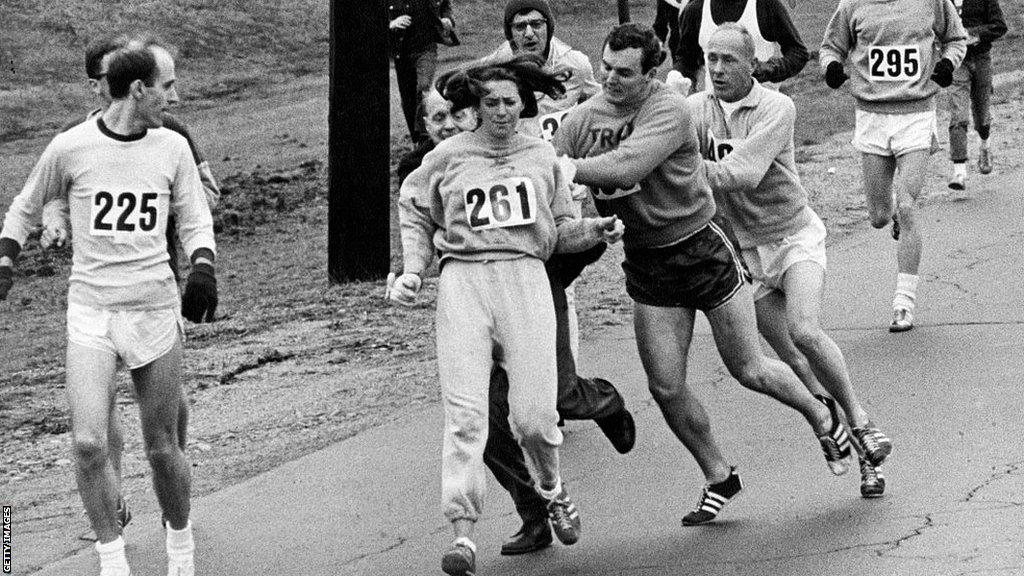
Switzer (no 261) evaded an attempt to remove her race number by Boston Marathon co-director Jock Semple, over her right shoulder, in the 1967 race. She and Semple became friends in later life
Over the following decades, that image became incorrectly woven into the tale of the first woman to run the Boston Marathon.
However, Gibb's stance is clear.
"Switzer was neither first, nor official. She was, in fact, the second-place woman in the second year of what is now called the women's pioneer division Boston Marathon," says Gibb.
Though it wouldn't be until 1972 that women were given numbers and allowed official entry, the pioneers had lit a fuse.
"It changed how people thought about women running," says Gibb.
In 1973, the first all-women's marathon was held in Waldniel, West Germany, but as the 1980 Summer Olympic Games in Moscow came and went, still without a female marathon event, patience was wearing thin.
Especially since the American College of Sports Medicine (ACSM) appeared to have put the matter of medical evidence against women running long distances firmly to bed with a statement in January 1980.
"There exists no conclusive scientific or medical evidence that long-distance running is contraindicated for the healthy, trained female athlete," it read.
"The ACSM recommends that females be allowed to compete at the national and international level in the same distances in which their male counterparts compete."
The following year, when the International Olympic Committee met in Baden-Baden, Germany, a vote passed that meant that at the 1984 Olympics in Los Angeles, a female marathon event was included - and has been ever since.
The effect this has had on women's marathon running has been dramatic. In the last 60 years, the women's world record for 26.2 miles has plummeted by an astonishing one hour and 23 minutes. As a comparison, the men's record has dropped by only 54 mins in the last 115 years.
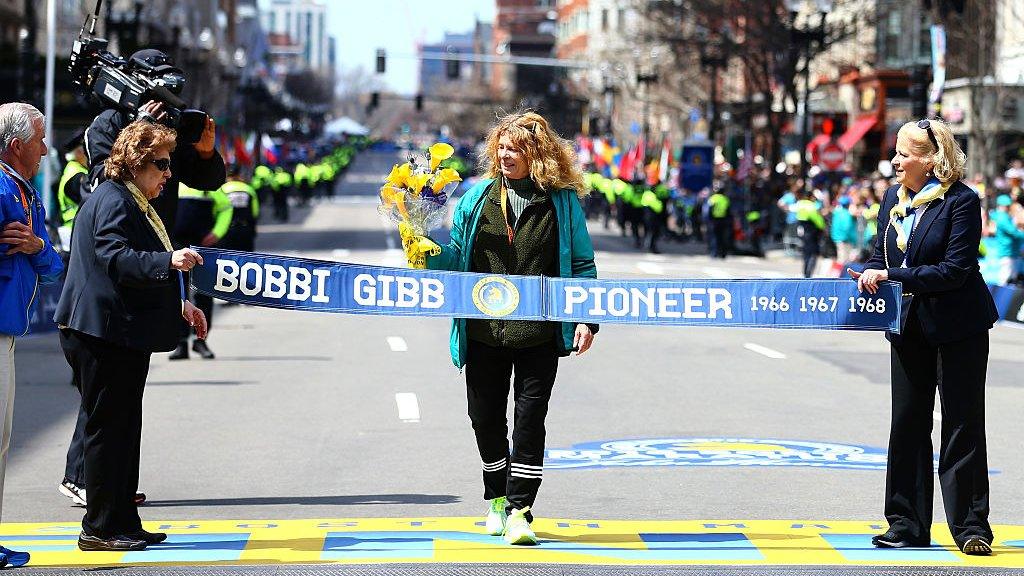
Gibb crosses a ceremonial finishline in 2016 - 50 years on from her debut in the race
Gibb continued running daily, but her life moved in a different direction. She had helped redefine attitudes towards female running, but that was just one chapter in a life that has been wonderfully varied.
"After that, I wanted to challenge everything - keep the ball rolling," says Gibb.
In 1969 she graduated from the University of California with a premedical curriculum major in philosophy and minor in mathematics.
She wanted to go to medical school but, like in Boston, it was hard for a woman to get a place. In one interview she was told she was "too pretty" and "would distract the boys in the lab".
Instead, she began working in epistemology and neuroscience at the Massachusetts Institute of Technology while taking law classes in the evening.
In 1976 she founded the Institute for the Study of Natural Systems, external, a non-profit educational and research group, and passed the bar two years later.
She practised law for 18 years before moving back to scientific research, this time in cellular molecular biology focusing on neurodegenerative diseases.
She is also a fine art sculptor and contemporary painter, and has written several books, including her memoir Wind in the Fire.
Her running exploits continue to inspire. In 1996, Gibb was finally recognised as an official three-time winner, receiving her medals while also having her name inscribed on the Boston Marathon Memorial in Copley Square.
In 2016, 50 years after that momentous race, Ethiopia's Atsede Bayisa presented Gibb with her Boston Marathon winner's trophy after learning of the events of 1966.
"Each year, they celebrate me as a three-time winner, which is fun, but the main thing is I get to meet all these amazing people from all over the world, all social groups, all ethnic groups, races, genders - we love each other - we make friends," says Gibb.
A runner, scientist, lawyer, artist, and author - Bobbi Gibb has done it all and continues to promote a positive message regarding equality.
"One of my purposes was to end the stupid war between the sexes, where men had to live in this little box and women had to live in another little box," says Gibb.
"I'm always fighting against false messages. The truth sets us free. Back then, men weren't allowed to have feelings and women weren't allowed to have a brain. What if a man wants to knit? Is he any less of a man? No. What if a woman wants to drive a truck? Is she any less of a woman? No.
"All people can be who they want to be."